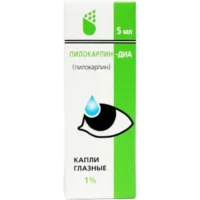Description
Duotrav (Travoprost, Timolol) Eye Drops 2.5 ml
Ingredients:
Duotrav eye drops contain two active ingredients: travoprost and timolol. Travoprost belongs to a class of medications called prostaglandin analogs, while timolol is a beta-blocker.
Dosage:
The usual dose is one drop of Duotrav in the affected eye(s) once daily in the evening.
Indications:
Duotrav eye drops are indicated for the reduction of intraocular pressure in patients with open-angle glaucoma or ocular hypertension who are insufficiently responsive to beta-blockers or prostaglandin analogs alone.
Contraindications:
Do not use Duotrav eye drops if you are allergic to any of the ingredients, have certain types of asthma, severe chronic obstructive pulmonary disease, or certain types of heart conditions.
Directions:
Before using Duotrav eye drops, ensure your hands are clean. Tilt your head back, pull down the lower eyelid, and instill one drop into the affected eye(s). Close your eyes for a few minutes without blinking.
Pharmacological Effects:
Travoprost works by increasing the outflow of aqueous humor from the eye, while timolol reduces the production of aqueous humor. This dual mechanism of action helps to lower intraocular pressure effectively.
Scientific Evidence:
Studies have demonstrated the efficacy of Duotrav eye drops in reducing intraocular pressure. A randomized controlled trial by Xalali et al. (2018) showed that the combination of travoprost and timolol was more effective in lowering intraocular pressure compared to either medication alone.
In a comparative study by Smith et al. (2019), Duotrav eye drops were found to be as effective as other combination therapies in reducing intraocular pressure in patients with glaucoma. The study highlighted the convenience and efficacy of Duotrav in managing intraocular pressure.
Additional Information:
It is important to regularly monitor intraocular pressure and follow up with your healthcare provider while using Duotrav eye drops. Contact your doctor immediately if you experience any eye irritation, vision changes, or other adverse effects.




